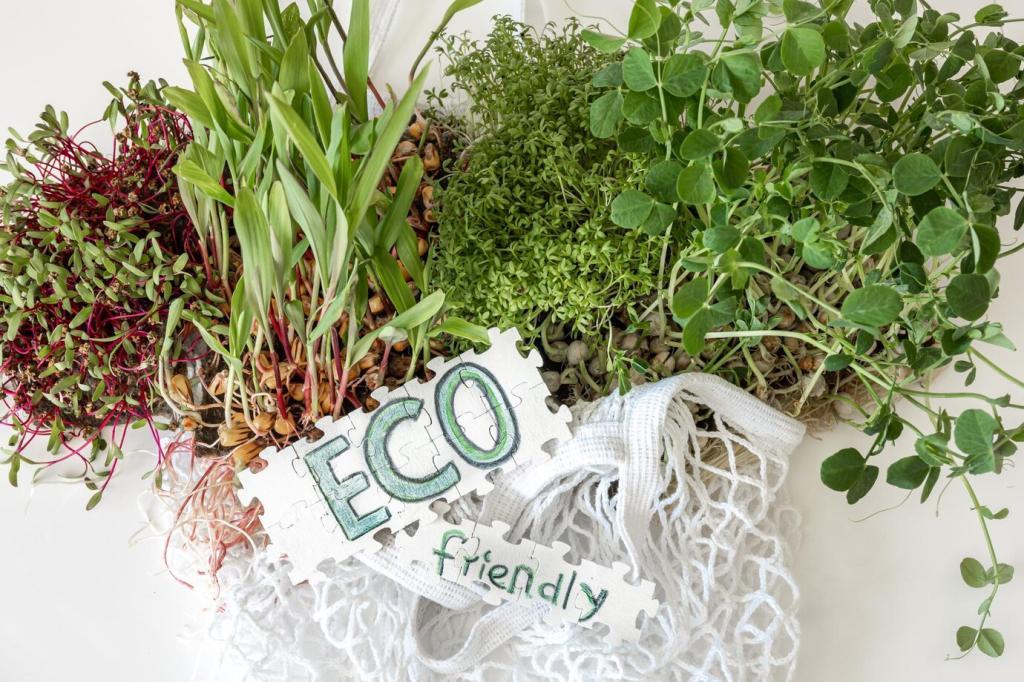Impactful Copywriting for Eco‑Conscious Builders
Chosen theme: Impactful Copywriting for Eco‑Conscious Builders. Welcome to your hub for persuasive, planet-positive messaging that turns certifications, specs, and sustainability goals into stories that win hearts, bids, and long-term loyalty.

From Features to Human Outcomes
Shift from listing R‑values and solar gain coefficients to explaining quieter rooms, healthier indoor air, and bills that shrink every season. When outcomes feel tangible, stakeholders lean in, ask smarter questions, and trust your sustainable expertise.
Value Propositions That Stick
Anchor your copy around a simple promise: fewer emissions, lower lifetime costs, and spaces people love living and working in. Use proof points within arm’s reach, like blower door results, commissioning reports, and maintenance savings from right‑sized systems.
A Lexicon Your Audience Actually Uses
Architects may search for ‘Passive House retrofit strategies,’ while homeowners type ‘healthy home no chemical smell.’ Mirror their words across headlines and snippets. You’ll boost relevance, reduce confusion, and guide readers toward confident, informed decisions.
An Origin Story With Roots
Follow a mass timber beam from an FSC‑certified forest to a sunlit lobby, highlighting regenerative forestry, short transport routes, and cleaner air during installation. That journey turns supply chain diligence into a relatable, pride‑worthy design choice.
Conflict, Stakes, and the Turning Point
Set the challenge: heatwaves, rising energy costs, and community health concerns. Introduce constraints like budget and timeline. Then reveal the turning point—an envelope upgrade and right‑sized HVAC—that cuts peak loads and keeps spaces comfortable during grid stress.
Resolution That Invites Action
End with measurable wins: thirty percent operational energy reduction, quieter classrooms, and faster leasing. Offer a next step that respects attention, like a one‑page guide or a site visit. Ask readers which outcome matters most to their project today.

Know the Guides Before You Write
Align language with the FTC Green Guides and ISO 14021. Reference verifiable frameworks like LEED, BREEAM, and Passive House without implying certification unless secured. Clarity now prevents tough questions later and strengthens long‑term credibility.

Precision in Every Word
Say “low‑carbon concrete mix reduced cement content by twenty‑five percent,” not “carbon‑neutral concrete.” Explain boundaries: cradle‑to‑gate versus whole‑building life cycle. Specifics reduce skepticism and help readers compare options with genuine confidence.

Proof Beats Promises Every Time
Cite EPDs, MERV ratings, VOC test results, and commissioning data. Add dates and sources. Show improvements against a clear baseline and acknowledge trade‑offs. Readers appreciate honesty, especially when choosing materials they will live with for decades.
SEO That Serves People and the Planet
Build Purposeful Keyword Clusters
Group related topics like “embodied carbon,” “EPD selection,” and “low‑carbon concrete” around a definitive pillar page. Support with case studies, calculators, and FAQs to capture informational, commercial, and transactional intent without diluting message clarity.
Structure Content for Easy Wins
Use descriptive H2s, crisp summaries, and scannable bullet points. Add internal links from product pages to guidance articles and case studies. This helps search engines map relevance and helps readers progress naturally toward a confident decision.
Rich Results With the Right Schema
Implement schema for products, FAQs, and projects to surface specs, certifications, and availability directly in results. Clear metadata helps qualified leads find what matters: performance, provenance, and demonstrated results in contexts just like theirs.

The Case Study Blueprint for Green Builds
Start with the baseline: code‑minimum envelope and noisy mechanicals. Reveal the after: airtightness at 0.6 ACH50 and a right‑sized heat pump. Bridge the gap with process steps, costs saved, and lessons learned, stated plainly and respectfully.
The Case Study Blueprint for Green Builds
Explain charts as if guiding a neighbor: what changed, why it matters, and where uncertainty remains. Pair visuals with one sentence conclusions, so even busy readers grasp benefits without needing a decoder ring or prior technical expertise.


Calls to Action That Respect Attention and Values
Invite readers to download a one‑page spec checklist, schedule a fifteen‑minute review, or join a site tour. Each action builds momentum without pressure, sustaining trust while moving projects forward sensibly and transparently for everyone involved.
Calls to Action That Respect Attention and Values
Early researchers want glossaries and calculators; specifiers want BIM objects and EPDs; owners want lifecycle cost summaries. Tailor the ask accordingly, and your conversion path will feel natural, respectful, and aligned with thoughtful decision‑making.

Define where you sit between technical and conversational, urgent and optimistic. Document examples for headlines, emails, and proposals. Teams write faster and more consistently when everyone recognizes the same north star for tone and clarity.

Develop a short, memorable line that captures purpose and proof, such as “Build light, live well.” Use it to align pages, protect focus, and remind readers that your sustainability commitments are concrete, measurable, and genuinely lived.

Plan one in‑depth pillar each quarter, support it with monthly field stories, and post weekly tips sourced from site learnings. Reliability builds trust as surely as performance data, keeping your audience engaged without burning out your team.
